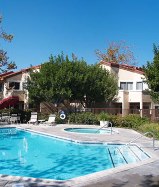Eternal Greece
 December 28, 2010
December 28, 2010 Janet Ramin - One of the greatest gifts Greece gave to civilization was their classical style of architecture. Mention Greek architecture to anyone and images of columns and moldings pop up. Chances are, there's a Greek-style building in your town. The Greek classical style was born in the Golden Age of Greece—during the 5th century BC—and it's never disappeared. Greek architecture has been copied and modified throughout the centuries, right down to the present age. Even the word architecture is Greek in origin; it's from arkhitekto, meaning master builder.
What's the reason for Greek's strong dominance? There are many factors, but among the first was that the Athenian government strongly cultivated the arts and architecture. From this powerful support arose the most influential artists and architects, including the sculptor Phidias and architects Iktinos and Kallikrates, the builders of the Parthenon. Another reason is due to the truism: history is written by the victors. The Greeks built an empire through the conquest of many of its neighbors, spreading their ideas and customs around the world, including their architecture. Their most important buildings were made of stone—limestone and marble—and they were designed to last—through millennia, in fact. With many examples still standing, future architects and builders were able to copy and learn from the Greek designs. But the most important reason of all is that the early Greek builders worked out a design model based on harmonious proportions. The size, scale, and proportion of each structural element was thought out and reworked until they came up with the most visually appealing ratios. Their ideas obviously worked; their designs have been copied ever since.


The Greek architecture that is most widely recognized really refers to its public architecture. The ancient Greeks were highly religious and built many buildings to celebrate their gods, the temple being the most common public building. The most famous temple was the Parthenon, dedicated to the Greek goddess Athena, after whom the capital was named. Other public buildings included theaters, stadiums, gymnasiums, and stoas, a colonnaded building used to house retail shops, art galleries, and meeting sites—the precursor to our shopping malls. Many of our present-day public buildings are patterned after the ancient Greek buildings, including our sports stadiums, government buildings, banks, and theaters. Below is the Federal Hall National Memorial in New York which was patterned after a Greek temple.


The other side of Greek architecture was its domestic buildings, the various country and city homes of the people. Most homes were made of the more affordable materials of mud-bricks, clay, and wood and as a result, most did not survive into the current era and are not as well known. One exception is found in another country—the Italian country home of a Vatican priest, the Villa Rotonda, designed by the architect Andrea Palladio, and located in Vincenza, Italy. Palladio was influenced by Greek architecture and created a perfectly symmetrical house based on a cube plan and flanked by four colonnaded porticos. Its center hall is circular and topped by a dome.

Present-day domestic homes are made of stucco, limestone, terracotta, and wood. Below are examples of Greek houses that have survived in the more recent centuries, one made of rough stone and the other from stucco and terracotta tile.


The public buildings and domestic buildings were usually based on a cube or rectangular plan. The walls were flanked by a colonnade and porch, called a peristyle. The peristyle opens up to a courtyard in the center. Around the open courtyard several rooms were clustered.
The exceptions to this rule are found in the Greek Cycladic islands of Santorini and Mykonos. Here, cave dwellings were the typical homes. Steep, high cliffs cover the islands, and homes were chiseled from the stone and laid out in a haphazard manner. The rough stones were then whitewashed to provide a dramatic contrast to the sparkling blue ocean backdrop. Some homeowners have even painted their stone houses with bright colors of yellow, red, and blue.


Houses that are built in the modern era have combined some of the features of old Greek houses and merged it with modern features. The stone house below has the geometric shapes of an International-style building with large glass windows typical of modern buildings, but then mixed with the traditional stones indigenous to the area. The white-stuccoed house uses the traditional stucco material and whitewash but then is shaped into modern cubist forms.


From the Greek religious temples of antiquity to our present-day buildings, Greek design has withstood the test of time and continues to be used in modern architecture.
 This article has been reprinted with the permission of the Sheffield School, New York, NY. Sheffield began as an Interior Design school in 1985, and then expanded its course offerings to train people in other design-related fields, including Feng Shui, Wedding and Event Planning, and Jewelry Design. With thousands of active students and more than 50,000 graduates, Sheffield has trained more design professionals than any school in the world.
This article has been reprinted with the permission of the Sheffield School, New York, NY. Sheffield began as an Interior Design school in 1985, and then expanded its course offerings to train people in other design-related fields, including Feng Shui, Wedding and Event Planning, and Jewelry Design. With thousands of active students and more than 50,000 graduates, Sheffield has trained more design professionals than any school in the world.
- Request a free Sheffield School catalog describing their distance education courses.
- Subscribe to the Sheffield Designer newsletter.
 Greece,
Greece,  Palladio,
Palladio,  architecture,
architecture,  home in
home in  Sheffield School,
Sheffield School,  design,
design,  travel
travel 













Reader Comments